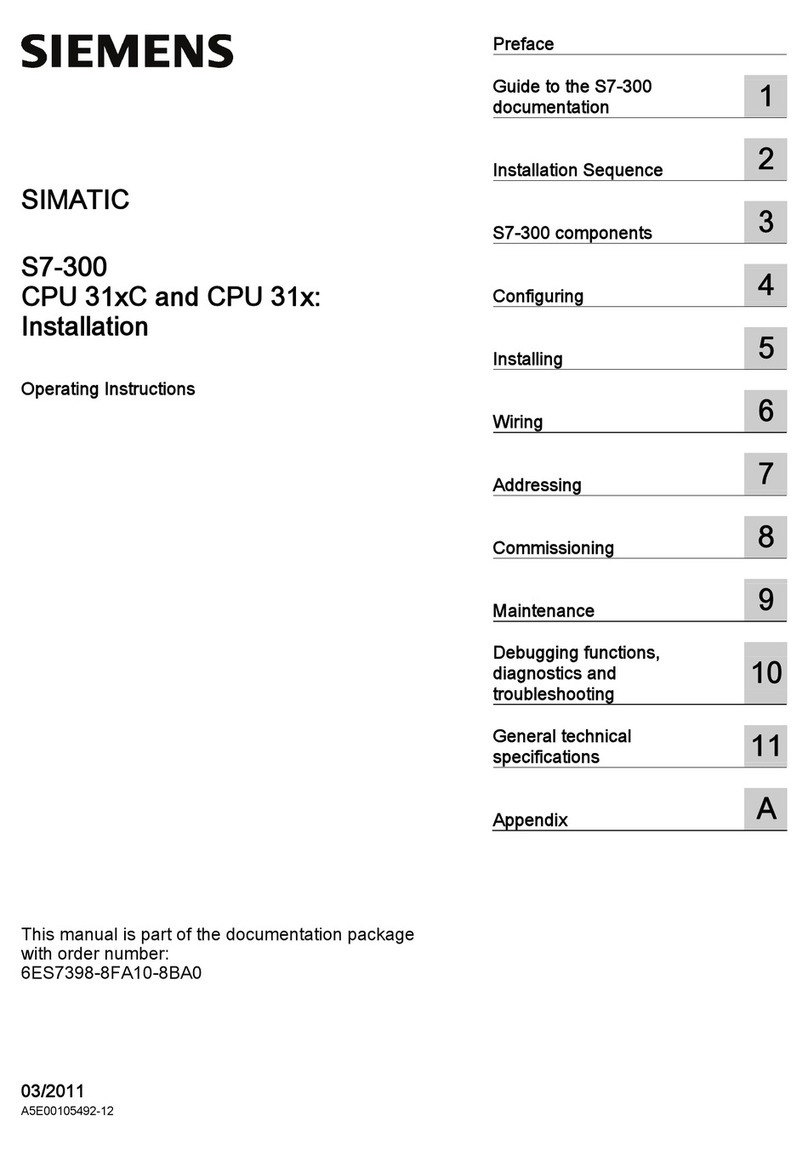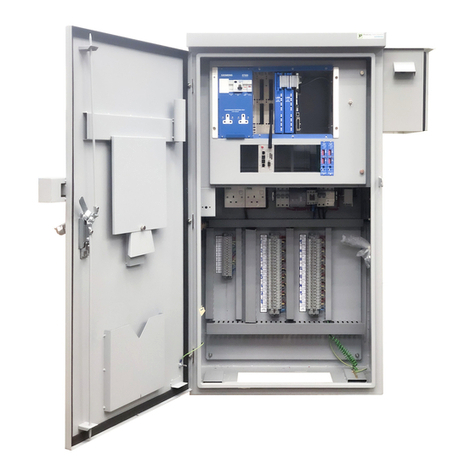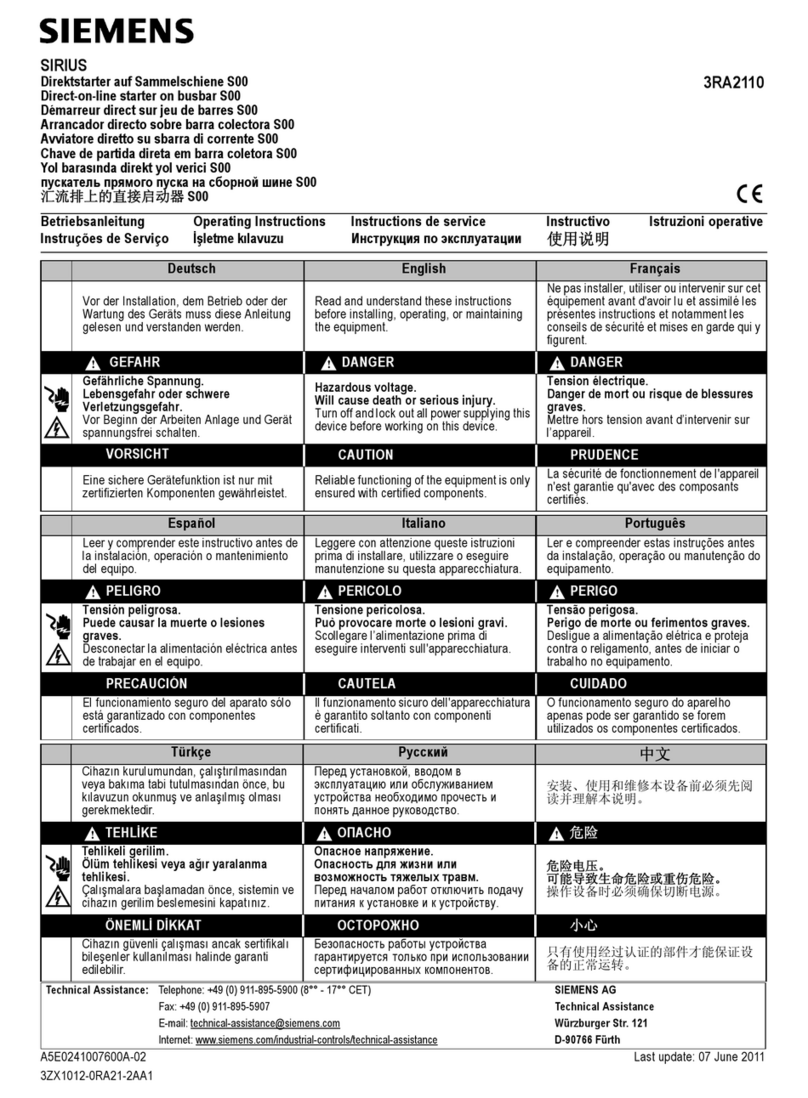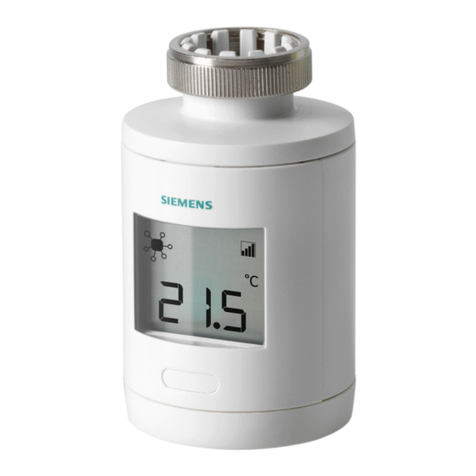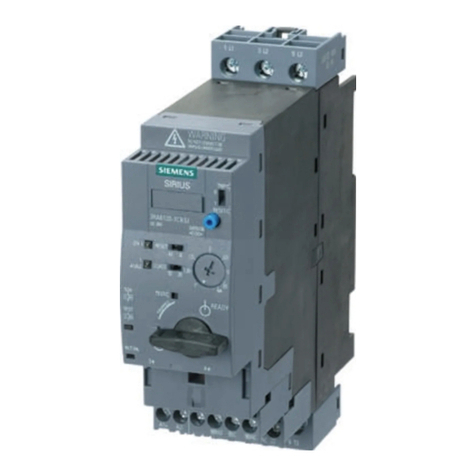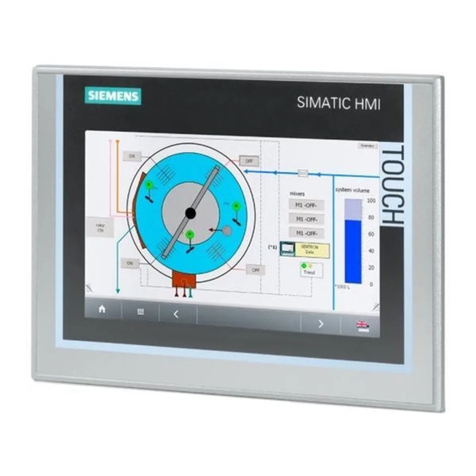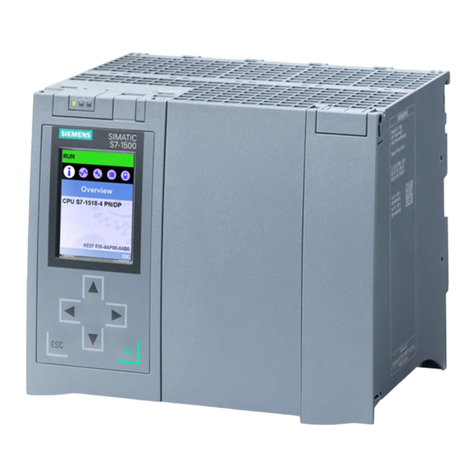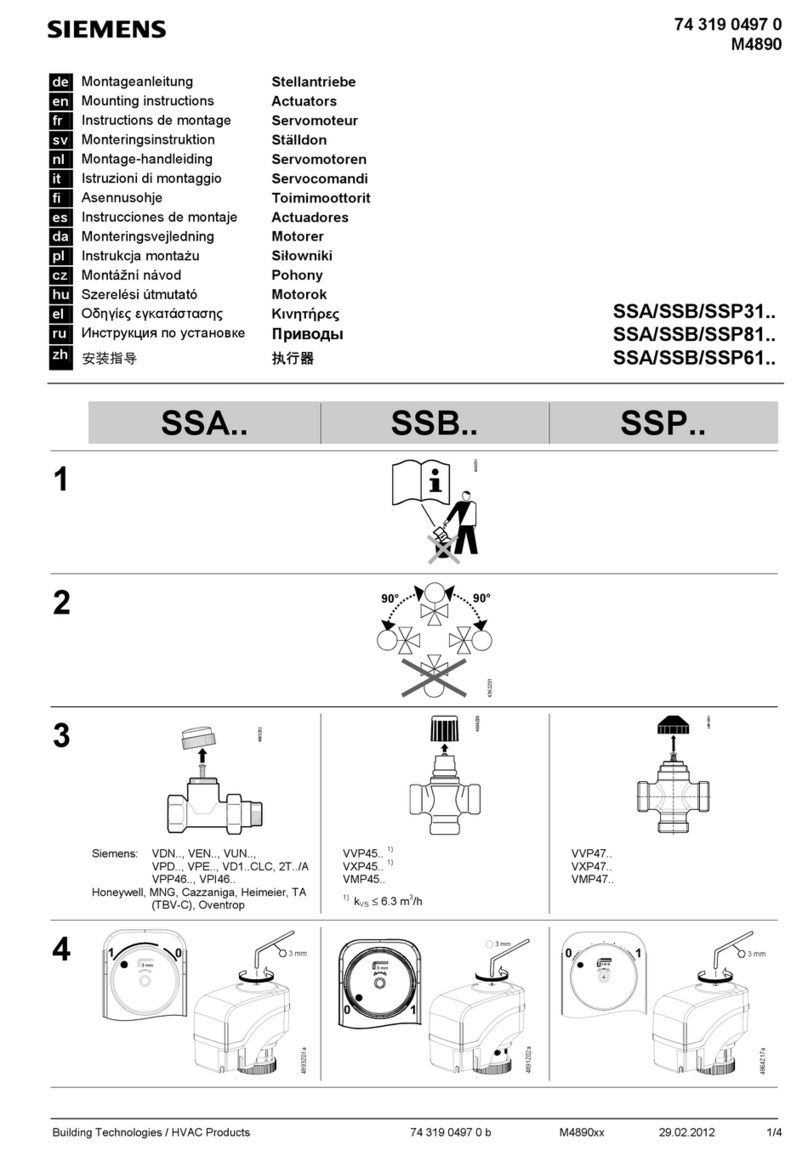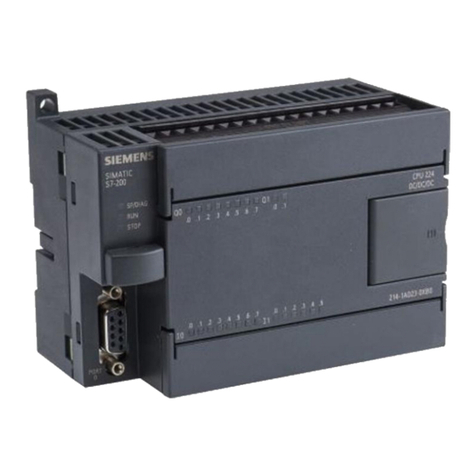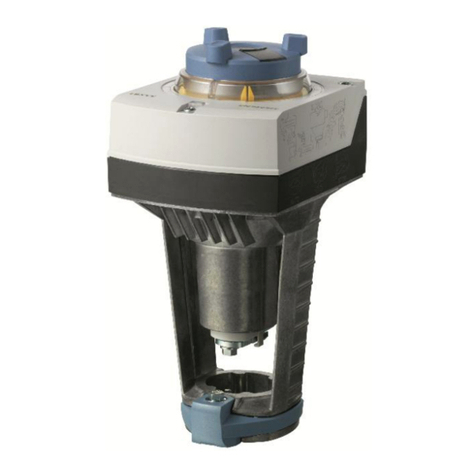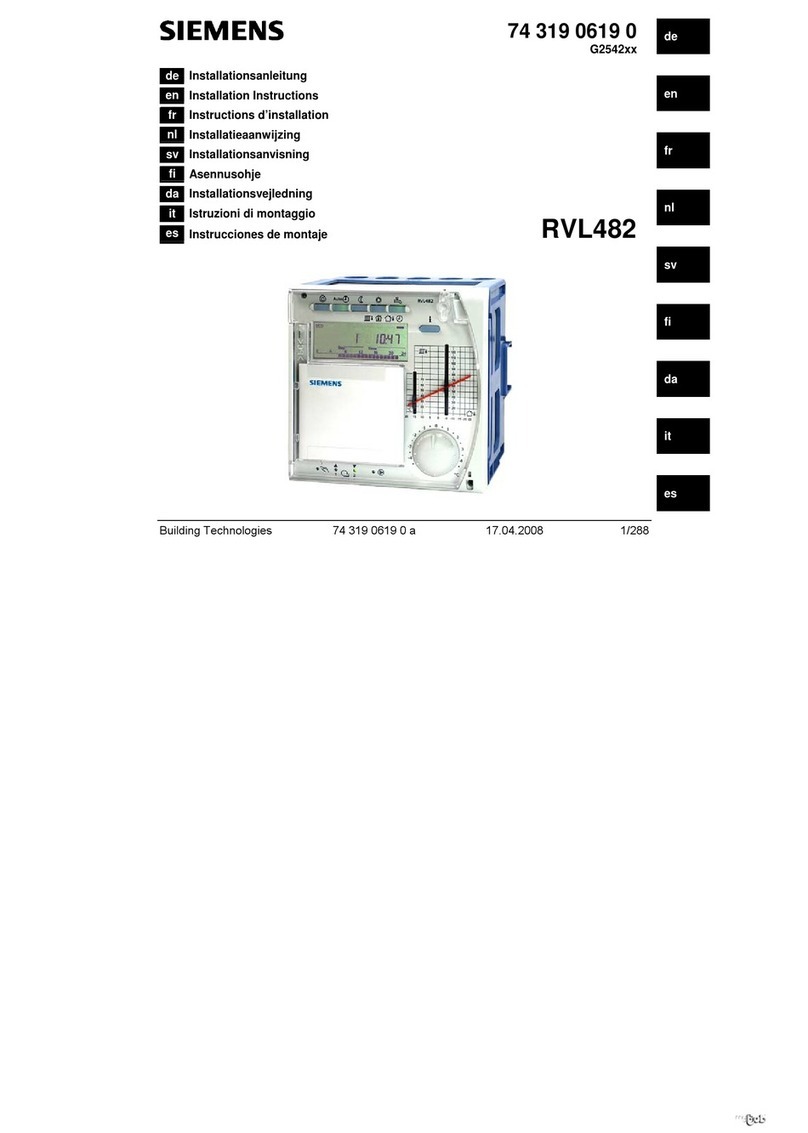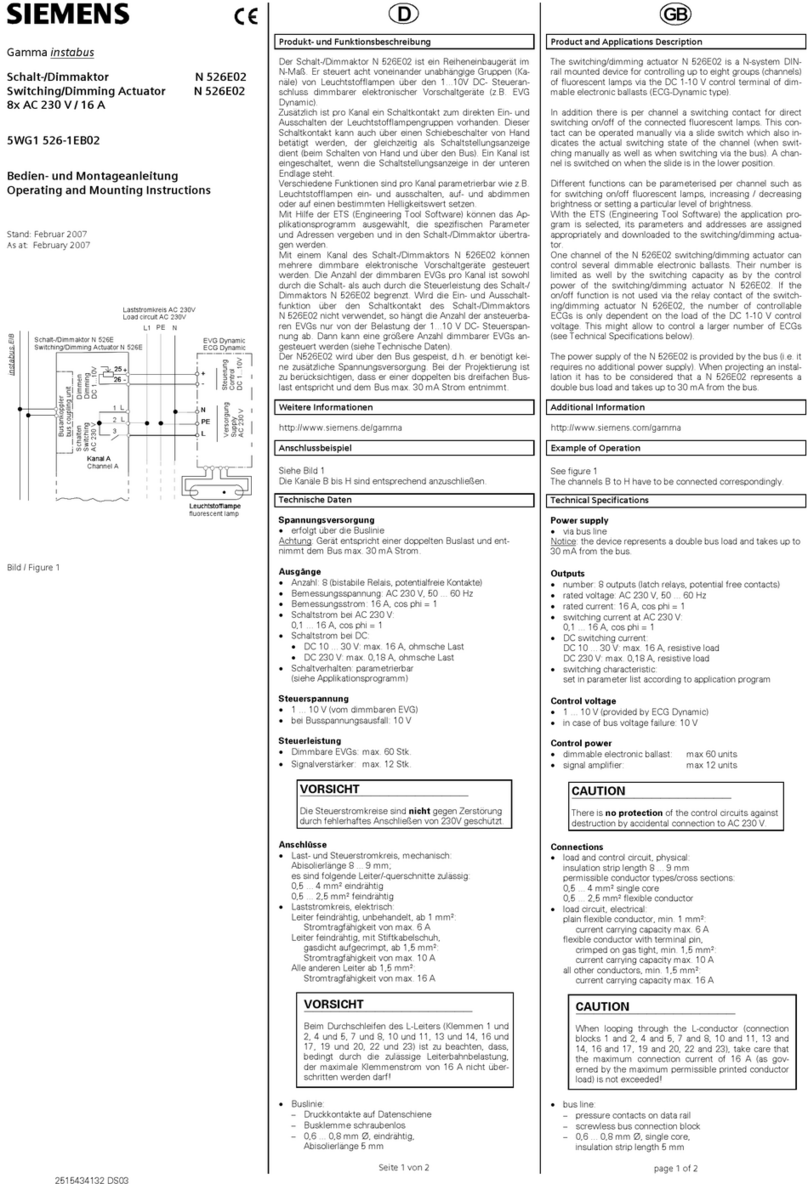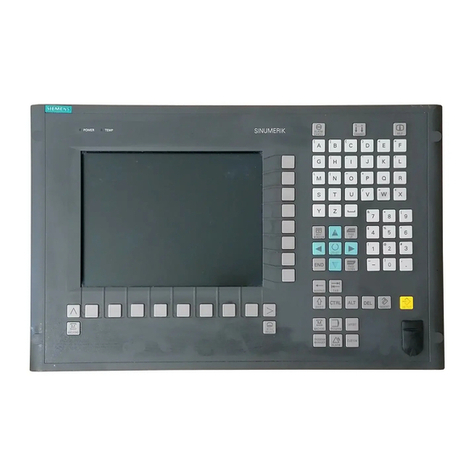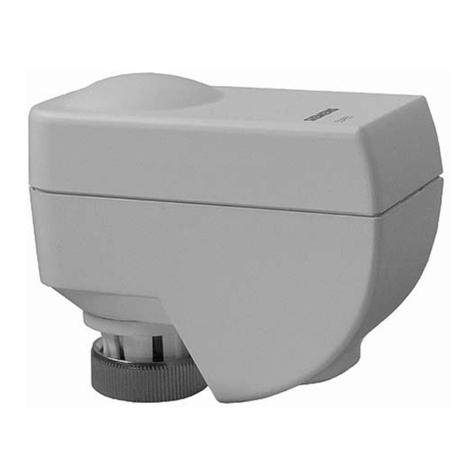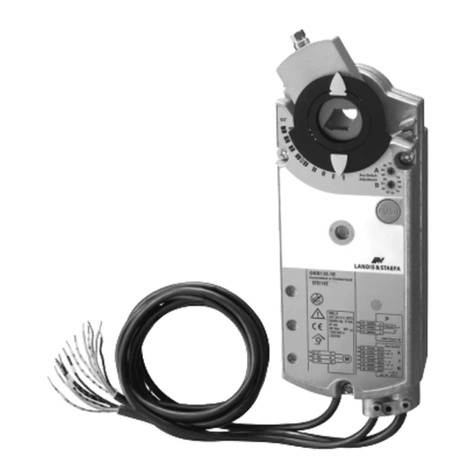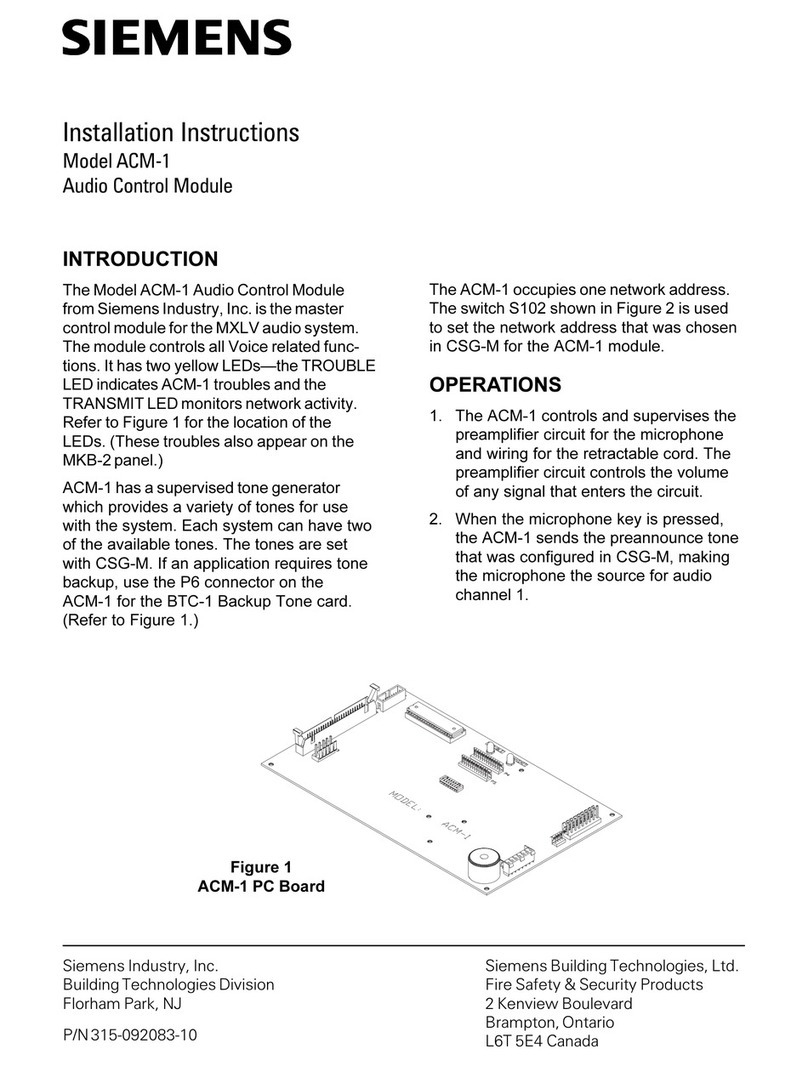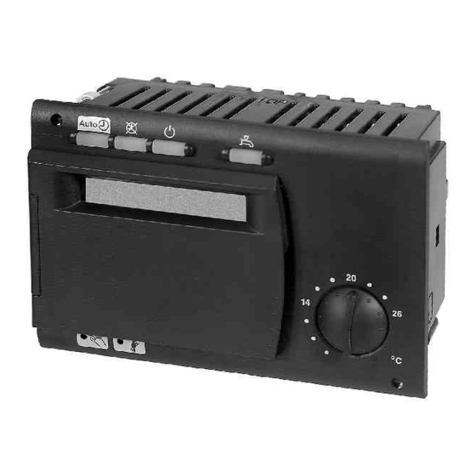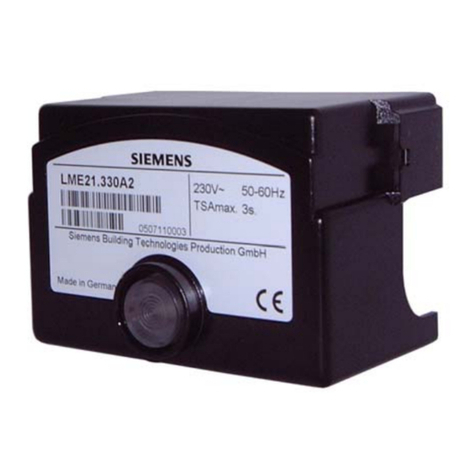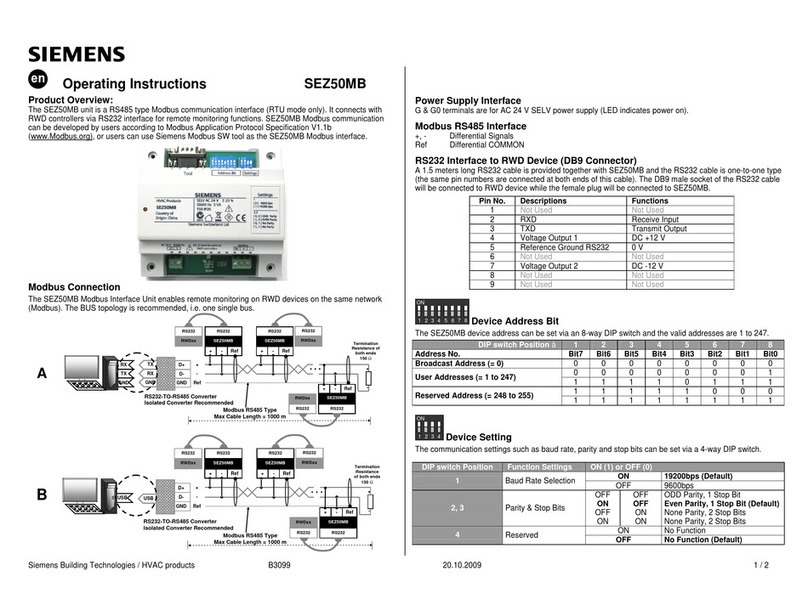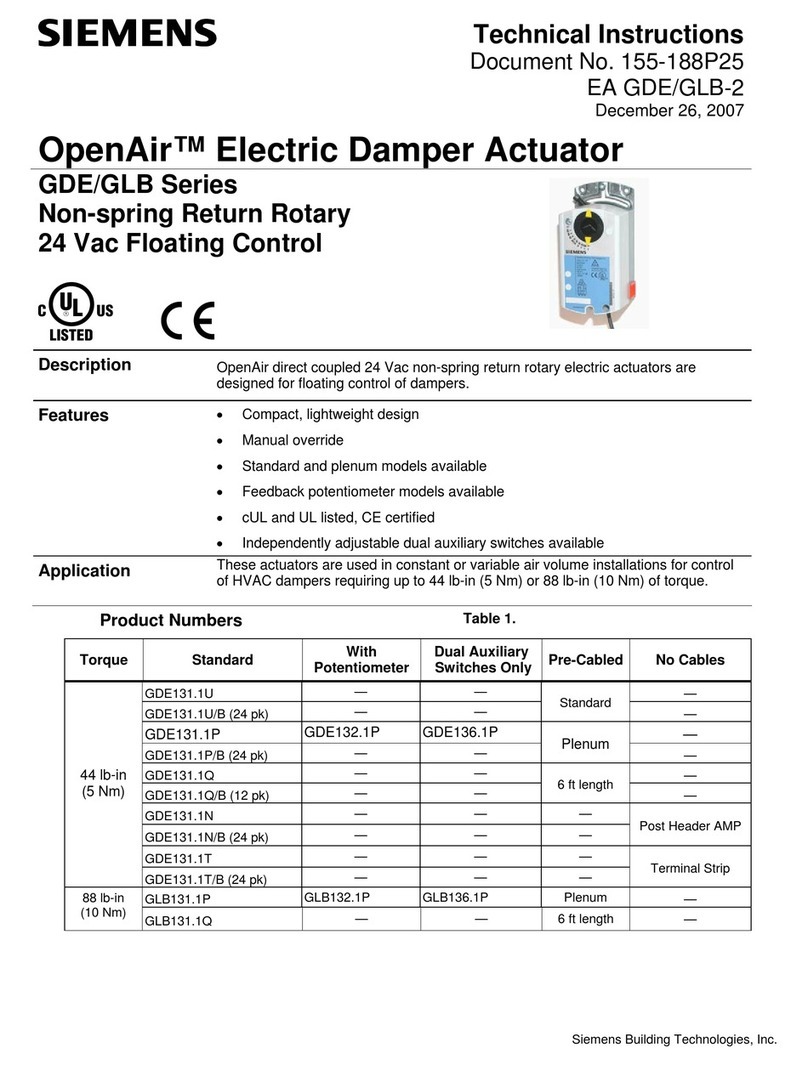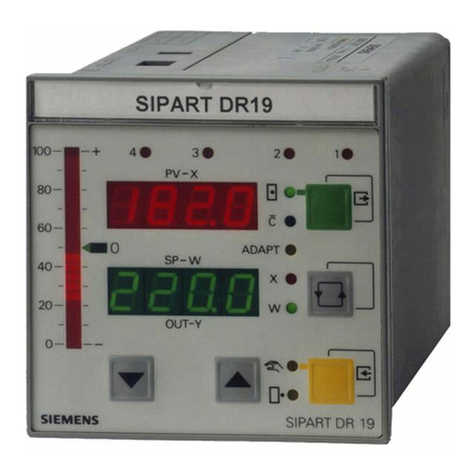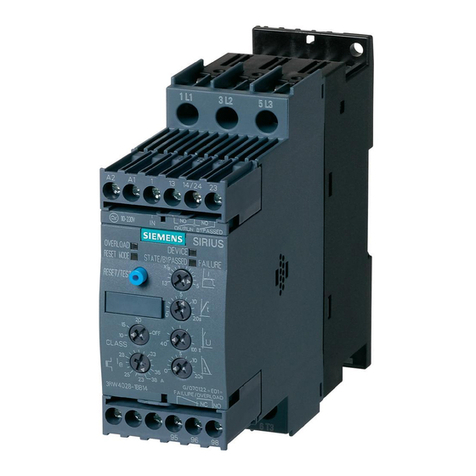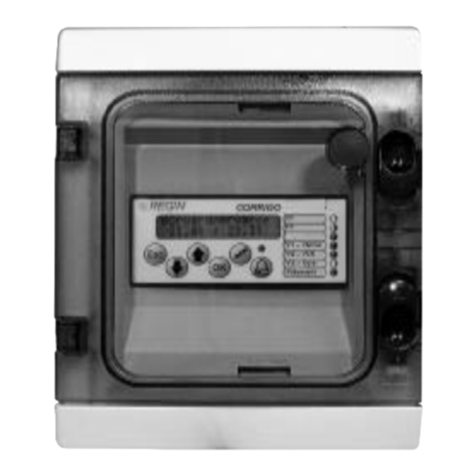
4/17
Building Technologies CC1N7106en
HVAC Products 20.02.2008
Installation notes
•Always run the ignition cables separate from the unit and other cables while observing
the greatest possible distance
•Do not mix up live and neutral conductors
•Install switches, fuses, earthing, etc., in compliance with local regulations
•The connection diagrams show the burner controls with earthed neutral conductor.
In networks with nonearthed neutral conductor and ionization current supervision, ter-
minal 2 must be connected to the earth conductor via an RC unit (product no.
ARC 4 668 9066 0). It must be made certain that local regulations are complied with
(e.g. protection against electric shock hazard) since AC 120 V / 50 Hz or
AC 230 V / 60 Hz mains voltage produces peak leakage currents of 2.7 mA
•Make certain that the maximum permissible current rating of the connection terminals
will not be exceeded
•Do not feed external mains voltage to the control outputs of the unit. When testing the
devices controlled by the burner control (fuel valves, etc.), the LME39… must not be
connected
•In the case of burners with no fan motor, an AGK25 must be connected to terminal 3
of the unit, or else the burner cannot reliably be started up
•To prevent mixup of different types of burner controls, the LME39… must always be
used in connection with grey plug-in bases AGK11.6. Make absolutely certain that the
live conductor for the control thermostat or pressurestat «R / W» is tapped after the
gas pressure switch «GP» and the safety limit thermostat «STB» and connected to
terminal 11 (refer to «Connection diagram»)
•Connecting cable from LME39… to AZL2…or from LME39… to OCI400 / OCI410…:
Since the BCI interface has no safe separation from mains voltage, the connecting ca-
ble between LME39… and AZL2…, or LME39… and OCI400 / OCI410…, must con-
form to certain specifications. Siemens has specified the cable for use under the
burner hood (cable supplied by Hütter; refer to «Technical data»). When using cables
of other manufacture, Siemens’ requirement will not necessarily be met
•Do not lay the connecting cable from the LME39… to the AZL2… together with other
cables. Use a separate cable
•Service operation with a longer connecting cable from LME39… to AZL2…, or from
LME39… to OCI410…:
If a longer cable is required for service work for example (short-time, <24 hours), note
that above usage under the burner hood no longer applies and, for this reason, the
cable can be subjected to increased mechanical stress. In that case, extra cable
sheathing is required (e.g. heat shrink tubing)
•Both the cable and the AZL2… display and operating unit must be shipped and stored so
that no damage due to dust and water can occur when used in the plant later on
•To ensure protection against electric shock hazard, make certain that, prior to switch-
ing on power, the cable is correctly connected to the AZL2…
•The AZL2… must be used in a dry and clean environment
•For safety reasons, feed the neutral conductor to terminal 2. Connect the burner com-
ponents (fan, ignition transformer and gas valves) to the neutral distributor as shown
below in the illustration. The connection between neutral conductor and terminal 2 is
prewired in the base
Example
23
745
BV2
BV1
Z
M
N7106a01/0405
Correct wiring of neutral conductors!
Legend
BV... Fuel valve
M Fan motor
Z Ignition transformer

